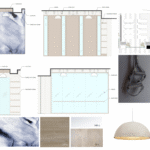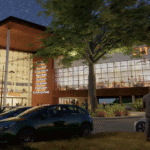Applied Graphics vs. Photopolymer: Choosing the Right Substrate for Your Sign
Applied Graphics and Photopolymer are two materials often considered when designing ADA interior and wayfinding signage systems. Depending on the scope of the project, one material may be more suitable than the other.
The following advantages and disadvantages of each will help you better understand your options and point you in the right direction when choosing the appropriate substrate for your signs.
Applied Graphics
Advantages:
- Scratch resistant
- Lightweight
- ADA compliant
- Well suited for both interior and exterior environments
- Laser engravable
- Large inventory of standard stock colors; no paint necessary
- Shorter fabrication period
Disadvantages:
- Two part construction; copy is not integral.
- Limited color selection and customization options
- Less vandal resistant than photopolymer; with effort, copy can be “picked”
Photopolymer
 Advantages:
Advantages:
- Vandal resistant; increased durability
- Lightweight
- ADA compliant
- Limitless design and color possibilities allow for a high-end appearance
- Wood and laminates available
- Environmentally friendly; recyclable and biodegradable
Disadvantages:
- Not scratch resistant
- Longer production timeline
- Typically more costly
- Different specs for indoor and outdoor use; indoor must be placed in climate controlled areas
Contact the sign design experts at Creative Sign Designs to learn more about sign design, materials, fabrication, and installation.




